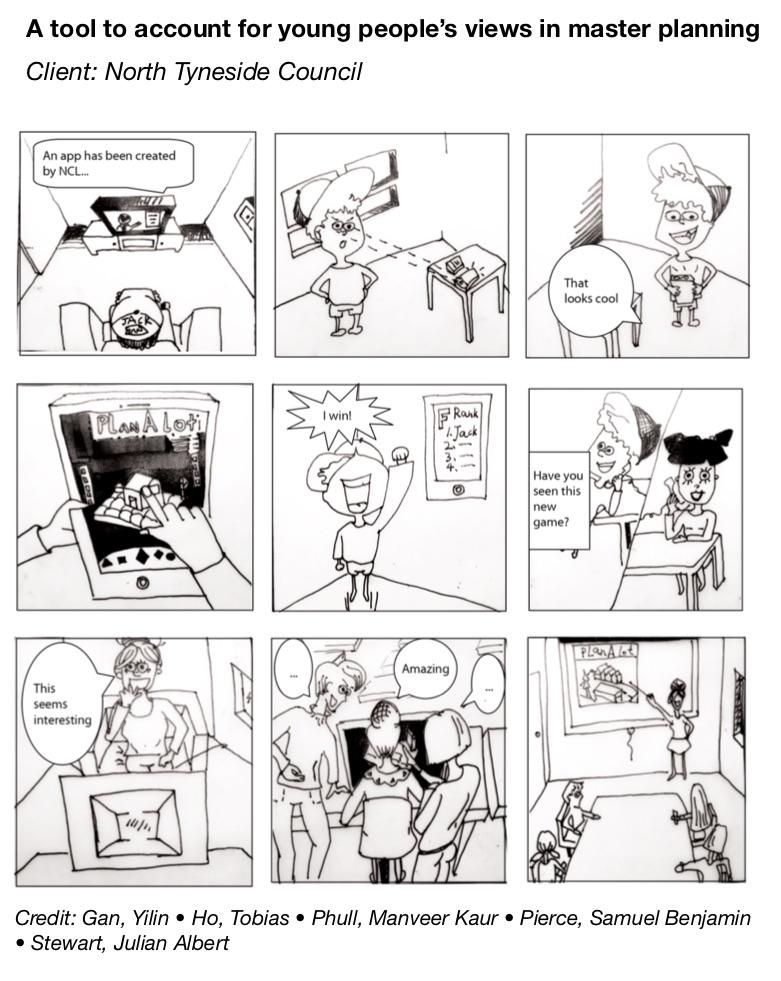Design processes can be messy and unstructured and that is particularly so in the fast-paced digital industries, where requirements, user expectations, technologies may turn over quickly. Good product design rests on the foundation of user-centred design, which means it always keeps sight of the users’ wishes, needs, demands. User-centred design is to design for the user. It is true that technological specifications may influence the design space, but in this module we are looking at designing bespoke interventions where this is not so much the case.
Story boards can be seen as part of the preparation work necessary before starting on any detailed designs or prototypes. Story boards are telling a story of how this digital product of yours will eventually be used. However, it also outlines a rational for why it would be used. Story boards depend on articulation of the use context, so where and why the practice you encourage is performed. Then, story boards detail a story of use. Here, a story is comprised of a sequence of events of use that coherently explain what practices happing when and in which order. Above all, stories assume the interactions in the story have a purpose for the user, a desired outcome without which the story would be incomplete.
Below is an excellent example from a student team on TCP2031 2016/17. Please note that the story board will develop alongside to your creative proposition and it may thus be updated, refined, polished, until you arrive at a final version.
